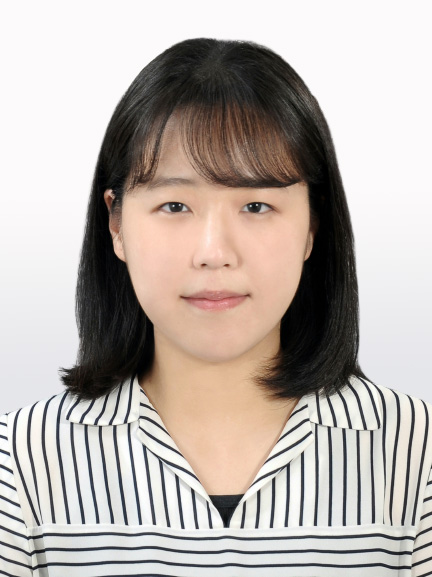[Herald Interview] Behind the scenes of Jongmyo Jeryeak with singers who breathe life into royal ceremony
UNESCO-listed Intangible Cultural Heritage set to perform in Hungary and Poland
By Hwang Dong-heePublished : Sept. 20, 2023 - 15:21
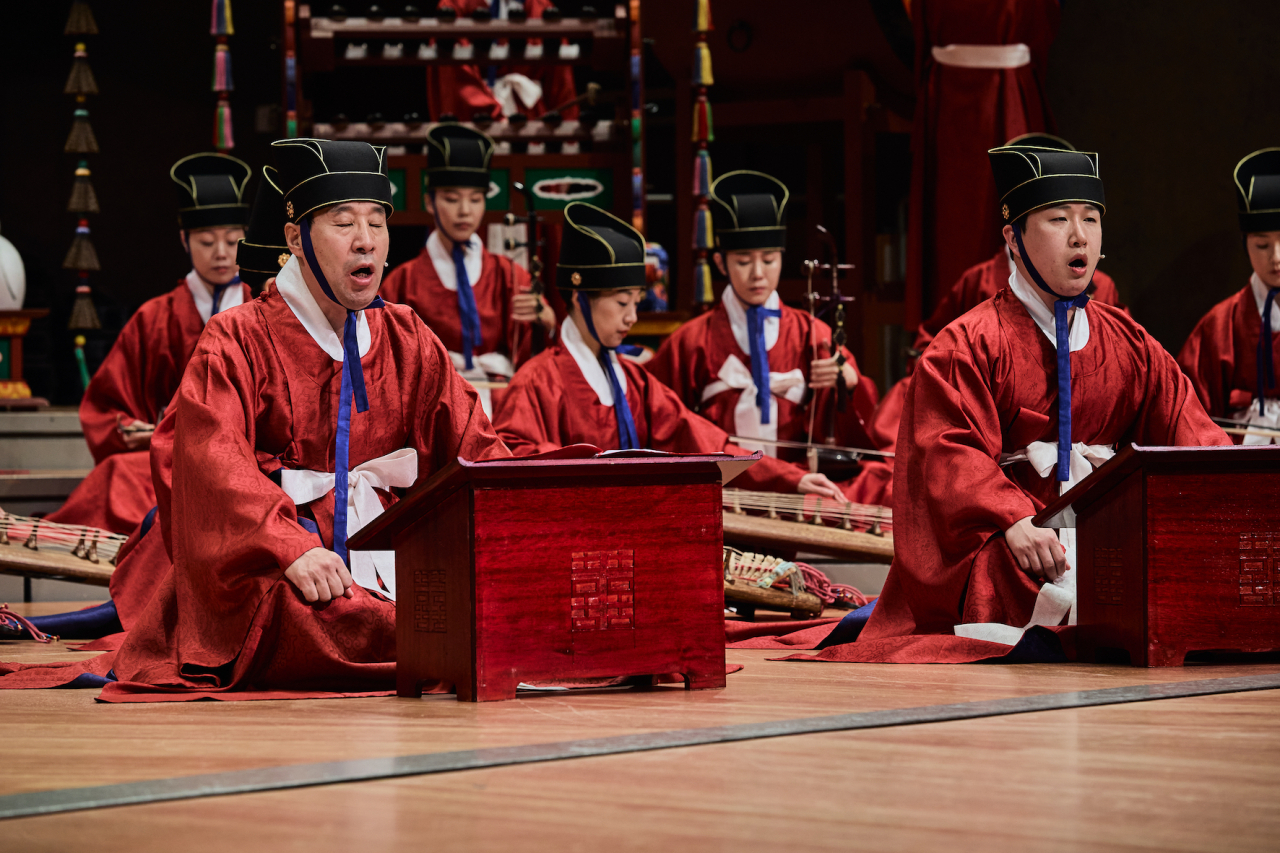
Just as a conductor raises the baton in a Western classical orchestra, the “jipbak,” or the person playing the “bak” -- a wooden clapper used in Korean court and ritual music -- signals the beginning of the performance. Then the “chuk,’ a green box-drum that also signals the start of a royal ceremony, is struck nine times.
Dressed in navy blue uniforms, the dancers in formation move gracefully and deliberately, with precise movements. As the musicians start to play, the melodic tunes led by the singers seamlessly blend with the instrumental ensemble.
Jongmyo Jeryeak, a royal ceremonial performance encompassing song, music and dance, was originally composed in 1447. It was performed during ancestral rites held at Jongmyo Shrine, where the tablets of Joseon kings and queens are enshrined. Registered as the nation's first Intangible Cultural Heritage in 1964, it was inscribed on UNESCO's Intangible Cultural Heritage of Humanity list in 2001.
This grand artistic ceremony is set to captivate audiences at the Erkel Theatre in Budapest, Hungary, on Thursday, and at the Warsaw Philharmonic Hall in Warsaw, Poland, on Monday, marking its first ever performance in the two countries.
The Korea Herald recently met with three singers from the National Gugak Center -- Hong Chang-nam, Lee Dong-young and Kim Dae-youn -- who breathe life into the centuries-old melodies of Jongmyo Jeryeak.
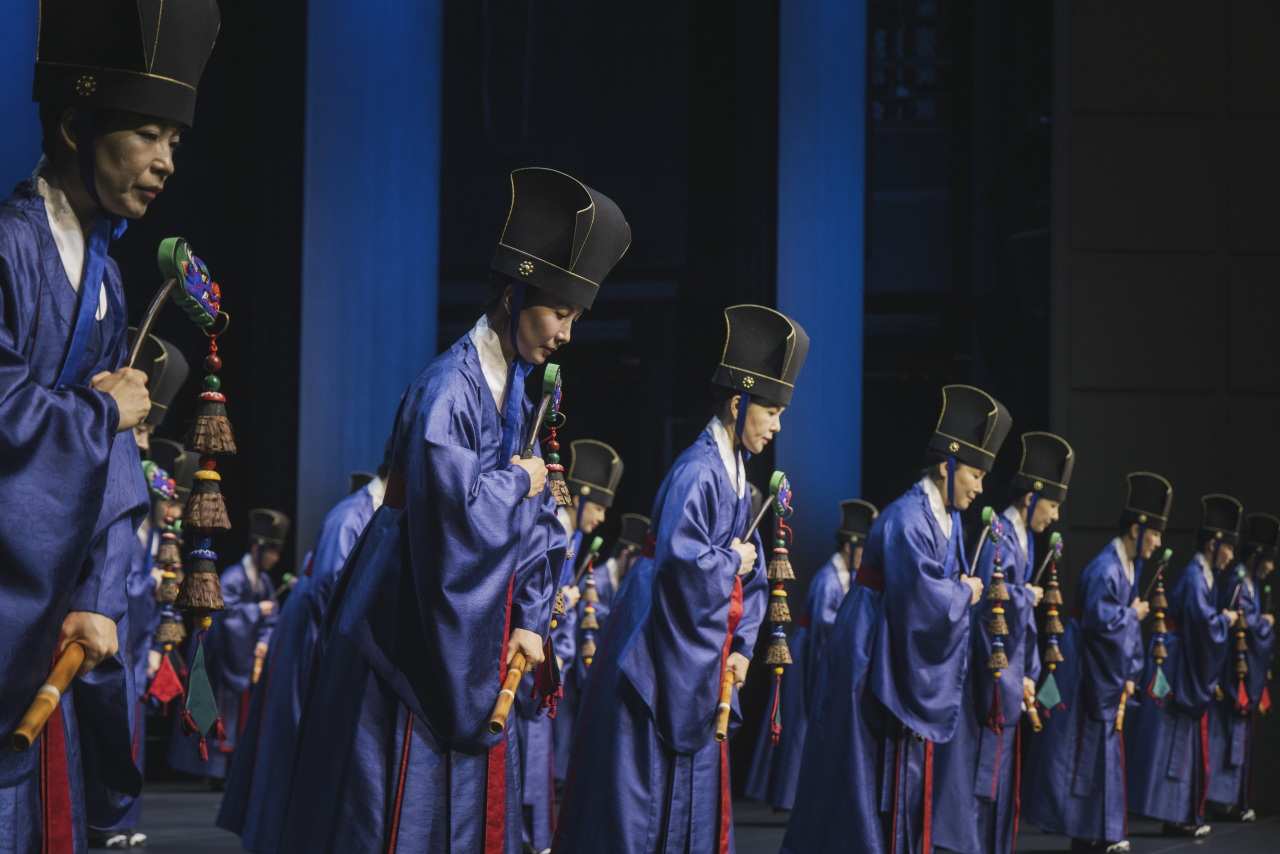
While the initial attention of the audience often gravitates toward the perfectly synchronized dance, the singers maintain an unbroken flow of music.
“From a singer’s perspective, it is a continuous, nearly uninterrupted (45 minute) song. We don’t have a moment to catch our breath and need to move on to the next melody right away,” said Lee. “And ‘Jeongdaeeop,’ with its much higher notes requires powerful singing, which is quite physically demanding.”
The performance is divided into two parts, “Botaepyeong” and “Jeongdaeeop,” comprised of 11 songs each. The first part praises the wisdom and virtues of the ancestors, while the latter celebrates their valor and bravery.
Hong explained that in Korean traditional music, there are no separate tenor or bass voice parts -- the singers need to cover the entire range.
"Jongmyo Jeryeak is a court ritual music. It belongs to the genre of ‘jeongga (music enjoyed by noblemen),’ setting it apart from folk music like ‘pansori,’” said Hong.
“This genre emphasizes proper decorum. It is important to sing with restrained emotions, focusing on a dignified tone and an atmosphere of composure.”
The three singers, each with a distinct timbre, unite their voices to craft a harmonious tone.
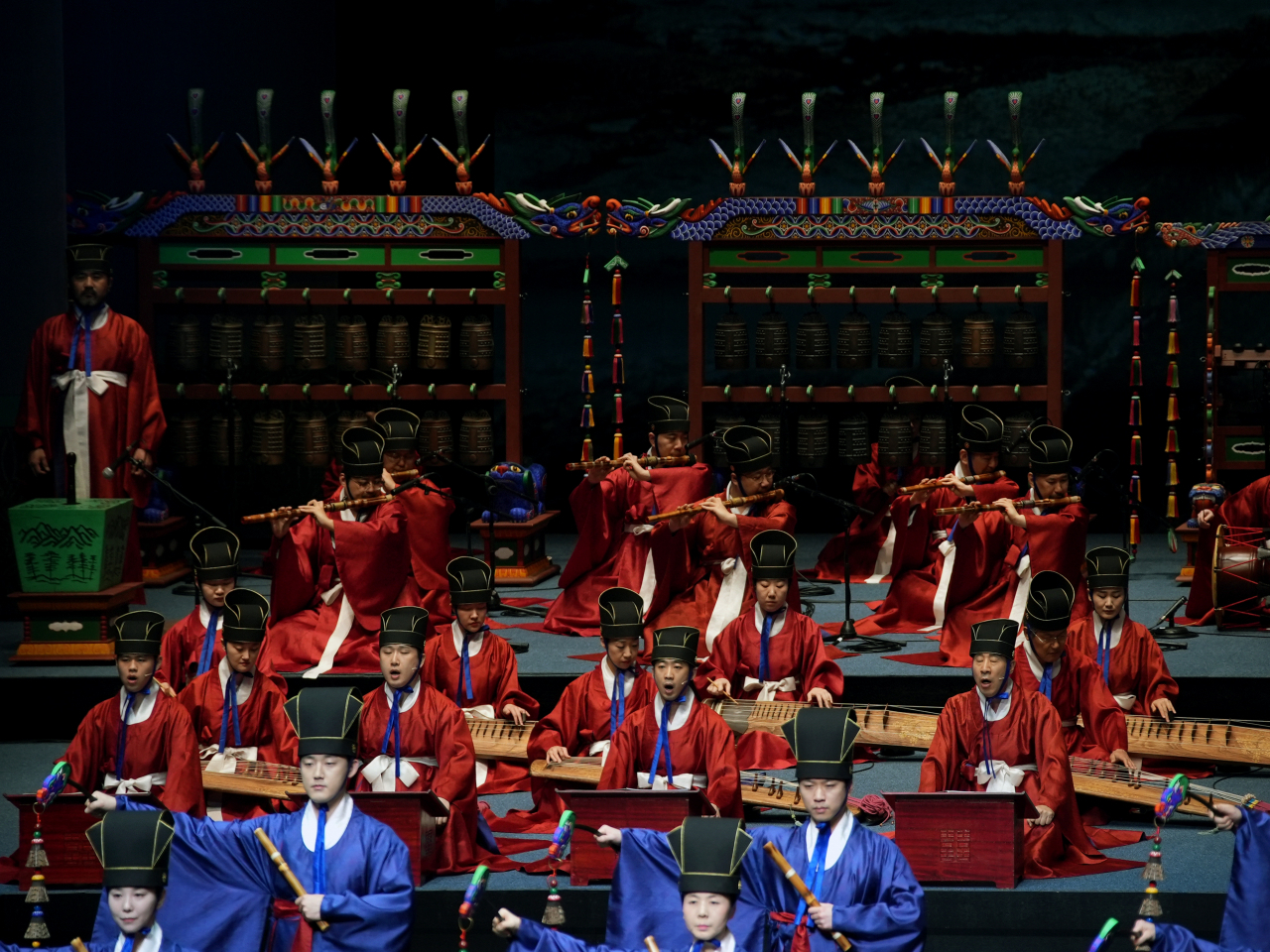
Jongmyo Jeryeak was first performed outside the country in Tokyo in 2000. It was performed on a tour of Italy and Germany in 2007, France in 2015, and Germany again in 2022.
While Hong and Lee, who toured four German cities last year, fondly recalled the standing ovations they received, Kim who recently joined the National Gugak Center is embarking on an overseas tour with the group for the first time.
“I've performed abroad a few times on a personal level, but this tour represents more than just me. We are representing Korean culture," said Kim. "It's really meaningful to be part of this, and be able to introduce a Korean tradition that has persevered for over 500 years."
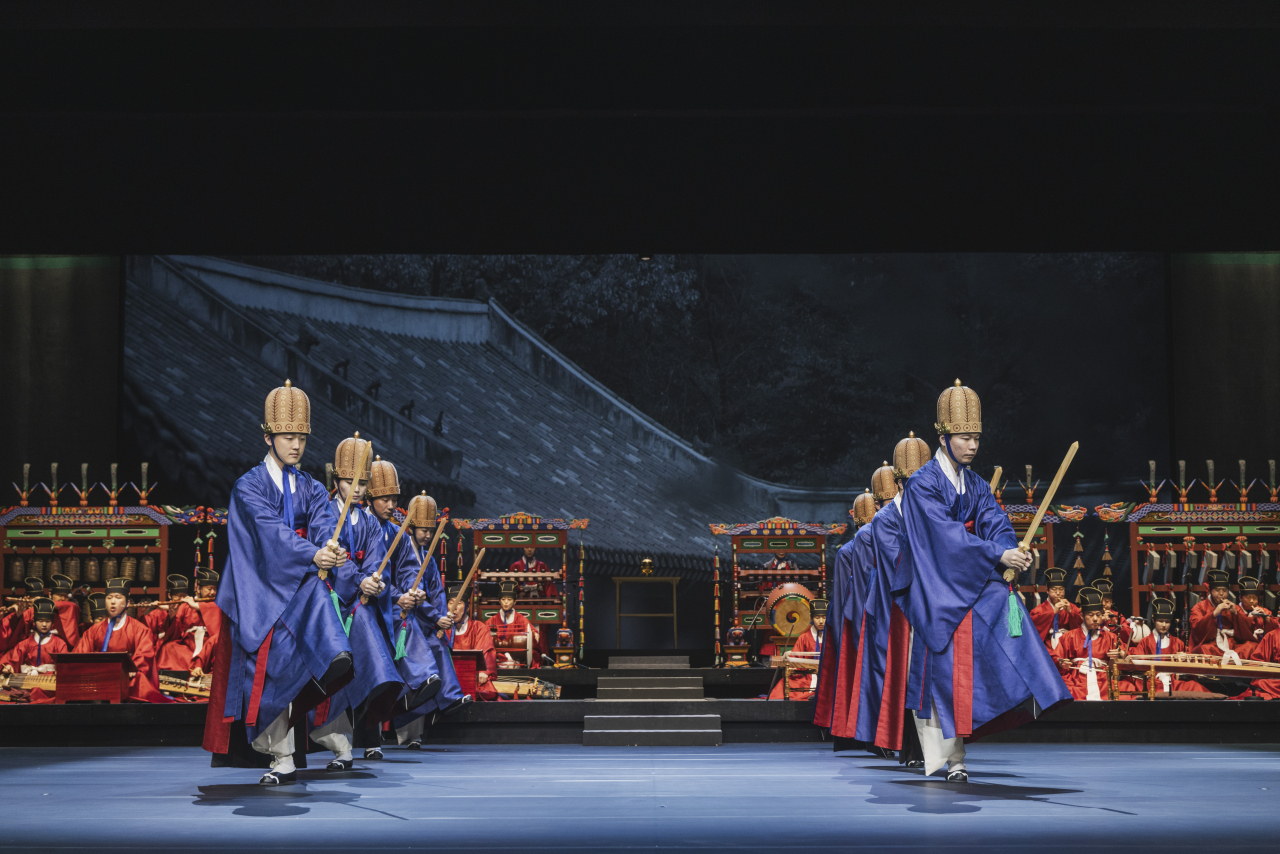
The vocalists said the National Gugak Center is a group capable of staging such a grand performance. With an almost 600-year history, the production hopes to become more accessible and engaging for audiences.
This year, the NGC's Director-General Kim Young-woon started giving commentaries for the Seoul performance in June. The center also embarked on a nationwide tour for the first time, performing in cities such as Daejeon, Ulsan and Daegu. The performances in Hungary and Poland will be accompanied by special lectures, costume demonstrations and exhibitions as well.
"Among all the genres of Korean traditional music, jeongga is the most underrepresented. Only 10 people in the country work as jeongga singers and receive salaries,” said Hong.
“They say it's an important genre, yet it lacks the necessary support (compared to other genres in gugak). As a result, very few singers choose to specialize in it. There's a strong yearning in the field for more policy support,” added Hong.
“We hope that through overseas performances, jeongga can garner greater recognition."














